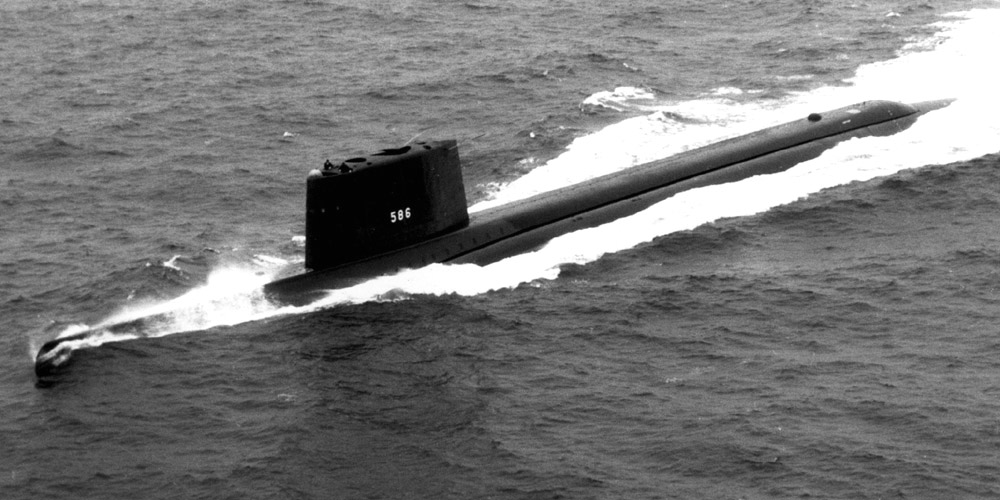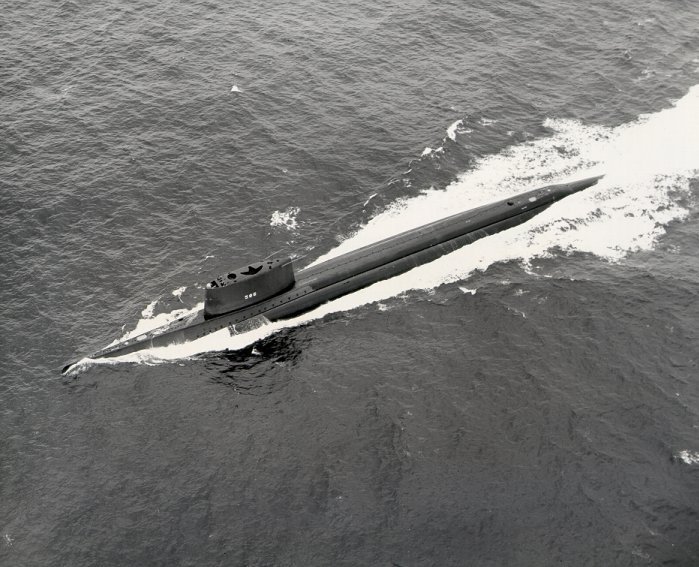|
S4G
The S4G reactor is a naval reactor used by the United States Navy to provide electricity generation and propulsion on warships. The S4G designation stands for: * S = Submarine platform * 4 = Fourth generation core designed by the contractor * G = General Electric was the contracted designer This nuclear reactor is the shipboard equivalent of the S3G reactor. It was installed in a dual-configuration on with two reactors and two five-blade propellers, which was the first ship to make a submerged circumnavigation Circumnavigation is the complete navigation around an entire island, continent, or astronomical body (e.g. a planet or moon). This article focuses on the circumnavigation of Earth. The first recorded circumnavigation of the Earth was the Magel ... of the world. References {{DEFAULTSORT:S4g Reactor United States naval reactors ... [...More Info...] [...Related Items...] OR: [Wikipedia] [Google] [Baidu] |
S3G Reactor
The S3G reactor is a naval reactor used by the United States Navy to provide electricity generation and propulsion on warships. The S3G designation stands for: * S = Submarine platform * 3 = Third generation core designed by the contractor * G = General Electric was the contracted designer Design This nuclear reactor generates 78 MW. It consists of a highly enriched uranium core with a 2-loop pressurized water reactor. History This design, designated as S4G, was used for the two reactors on the USS ''Triton'' (SSRN-586); no other ships used this reactor plant. The plant had unique design features such as horizontal steam generator U-tubes, and it was one of the only submarine plants with a deaereating feed tank (DFT). A prototype reactor was built ashore at Knolls Atomic Power Laboratory's Kesselring Site in West Milton, New York in 1958 to test the reactor design. Once the design was proven, the prototype continued operation to train students and test new syste ... [...More Info...] [...Related Items...] OR: [Wikipedia] [Google] [Baidu] |
United States Naval Reactor
United States naval reactors are nuclear reactors used by the United States Navy aboard certain ships to generate the steam used to produce power for propulsion, electric power, catapulting airplanes in aircraft carriers, and a few more minor uses. Such naval nuclear reactors have a complete power plant associated with them. All U.S. Navy submarines and supercarriers built since 1975 are nuclear-powered by such reactors. There are no commissioned conventional (non-nuclear) submarines or aircraft carriers left in the U.S. Navy, since the last conventional carrier, , was decommissioned in May 2009. The U.S. Navy had nine nuclear-powered cruisers with such reactors also, but they have since been decommissioned. Reactors are designed by a variety of contractors, then developed and tested at one of several government (Department of Energy) owned and prime contractor-operated facilities: Bettis Atomic Power Laboratory in West Mifflin, Pennsylvania and its associated Naval Reactors Fa ... [...More Info...] [...Related Items...] OR: [Wikipedia] [Google] [Baidu] |
United States Navy
The United States Navy (USN) is the maritime service branch of the United States Armed Forces and one of the eight uniformed services of the United States. It is the largest and most powerful navy in the world, with the estimated tonnage of its active battle fleet alone exceeding the next 13 navies combined, including 11 allies or partner nations of the United States as of 2015. It has the highest combined battle fleet tonnage (4,635,628 tonnes as of 2019) and the world's largest aircraft carrier fleet, with eleven in service, two new carriers under construction, and five other carriers planned. With 336,978 personnel on active duty and 101,583 in the Ready Reserve, the United States Navy is the third largest of the United States military service branches in terms of personnel. It has 290 deployable combat vessels and more than 2,623 operational aircraft . The United States Navy traces its origins to the Continental Navy, which was established during the American Re ... [...More Info...] [...Related Items...] OR: [Wikipedia] [Google] [Baidu] |
Electricity Generation
Electricity generation is the process of generating electric power from sources of primary energy. For utilities in the electric power industry, it is the stage prior to its delivery ( transmission, distribution, etc.) to end users or its storage (using, for example, the pumped-storage method). Electricity is not freely available in nature, so it must be "produced" (that is, transforming other forms of energy to electricity). Production is carried out in power stations (also called "power plants"). Electricity is most often generated at a power plant by electromechanical generators, primarily driven by heat engines fueled by combustion or nuclear fission but also by other means such as the kinetic energy of flowing water and wind. Other energy sources include solar photovoltaics and geothermal power. There are also exotic and speculative methods to recover energy, such as proposed fusion reactor designs which aim to directly extract energy from intense magnetic fields gene ... [...More Info...] [...Related Items...] OR: [Wikipedia] [Google] [Baidu] |
Nuclear Marine Propulsion
Nuclear marine propulsion is propulsion of a ship or submarine with heat provided by a nuclear reactor. The power plant heats water to produce steam for a turbine used to turn the ship's propeller through a gearbox or through an electric generator and motor. Nuclear propulsion is used primarily within naval warships such as nuclear submarines and supercarriers. A small number of experimental civil nuclear ships have been built. Compared to oil- or coal-fuelled ships, nuclear propulsion offers the advantages of very long intervals of operation before refueling. All the fuel is contained within the nuclear reactor, so no cargo or supplies space is taken up by fuel, nor is space taken up by exhaust stacks or combustion air intakes. However, the low fuel cost is offset by high operating costs and investment in infrastructure, so nearly all nuclear-powered vessels are military. Power plants Basic operation of naval ship or submarine Most naval nuclear reactors are of the pressuriz ... [...More Info...] [...Related Items...] OR: [Wikipedia] [Google] [Baidu] |
Warship
A warship or combatant ship is a naval ship that is built and primarily intended for naval warfare. Usually they belong to the armed forces of a state. As well as being armed, warships are designed to withstand damage and are usually faster and more maneuverable than merchant ships. Unlike a merchant ship, which carries cargo, a warship typically carries only weapons, ammunition and supplies for its crew. Warships usually belong to a navy, though they have also been operated by individuals, cooperatives and corporations. In wartime, the distinction between warships and merchant ships is often blurred. In war, merchant ships are often armed and used as armed merchantman, auxiliary warships, such as the Q-ships of the First World War and the armed merchant cruisers of the Second World War. Until the 17th century it was common for merchant ships to be pressed into naval service and not unusual for more than half a Naval fleet, fleet to be composed of merchant ships. Until the th ... [...More Info...] [...Related Items...] OR: [Wikipedia] [Google] [Baidu] |
Submarine
A submarine (or sub) is a watercraft capable of independent operation underwater. It differs from a submersible, which has more limited underwater capability. The term is also sometimes used historically or colloquially to refer to remotely operated vehicles and Autonomous underwater vehicle, robots, as well as medium-sized or smaller vessels, such as the midget submarine and the wet sub. Submarines are referred to as ''boats'' rather than ''ships'' irrespective of their size. Although experimental submarines had been built earlier, submarine design took off during the 19th century, and they were adopted by several navies. They were first widely used during World War I (1914–1918), and are now used in many navy, navies, large and small. Military uses include attacking enemy surface ships (merchant and military) or other submarines, and for aircraft carrier protection, Blockade runner, blockade running, Ballistic missile submarine, nuclear deterrence, reconnaissance, conventio ... [...More Info...] [...Related Items...] OR: [Wikipedia] [Google] [Baidu] |
Nuclear Reactor Core
A nuclear reactor core is the portion of a nuclear reactor containing the nuclear fuel components where the nuclear reactions take place and the heat is generated. Typically, the fuel will be low-enriched uranium contained in thousands of individual fuel pins. The core also contains structural components, the means to both moderate the neutrons and control the reaction, and the means to transfer the heat from the fuel to where it is required, outside the core. Water-moderated reactors Inside the core of a typical pressurized water reactor or boiling water reactor are fuel rods with a diameter of a large gel-type ink pen, each about 4 m long, which are grouped by the hundreds in bundles called "fuel assemblies". Inside each fuel rod, pellets of uranium, or more commonly uranium oxide, are stacked end to end. Also inside the core are control rods, filled with pellets of substances like boron or hafnium or cadmium that readily capture neutrons. When the control rods are low ... [...More Info...] [...Related Items...] OR: [Wikipedia] [Google] [Baidu] |
General Electric
General Electric Company (GE) is an American multinational conglomerate founded in 1892, and incorporated in New York state and headquartered in Boston. The company operated in sectors including healthcare, aviation, power, renewable energy, digital industry, additive manufacturing and venture capital and finance, but has since divested from several areas, now primarily consisting of the first four segments. In 2020, GE ranked among the Fortune 500 as the 33rd largest firm in the United States by gross revenue. In 2011, GE ranked among the Fortune 20 as the 14th most profitable company, but later very severely underperformed the market (by about 75%) as its profitability collapsed. Two employees of GE – Irving Langmuir (1932) and Ivar Giaever (1973) – have been awarded the Nobel Prize. On November 9, 2021, the company announced it would divide itself into three investment-grade public companies. On July 18, 2022, GE unveiled the brand names of the companies it wi ... [...More Info...] [...Related Items...] OR: [Wikipedia] [Google] [Baidu] |
Nuclear Reactor
A nuclear reactor is a device used to initiate and control a fission nuclear chain reaction or nuclear fusion reactions. Nuclear reactors are used at nuclear power plants for electricity generation and in nuclear marine propulsion. Heat from nuclear fission is passed to a working fluid (water or gas), which in turn runs through steam turbines. These either drive a ship's propellers or turn electrical generators' shafts. Nuclear generated steam in principle can be used for industrial process heat or for district heating. Some reactors are used to produce isotopes for Nuclear medicine, medical and industrial radiography, industrial use, or for production of weapons-grade plutonium. , the International Atomic Energy Agency reports there are 422 nuclear power reactors and 223 nuclear research reactors in operation around the world. In the early era of nuclear reactors (1940s), a reactor was known as a nuclear pile or atomic pile (so-called because the graphite moderator blocks of th ... [...More Info...] [...Related Items...] OR: [Wikipedia] [Google] [Baidu] |
Operation Sandblast
Operation Sandblast was the code name for the first submerged circumnavigation of the world, executed by the United States Navy nuclear-powered radar picket submarine in 1960 under the command of Captain Edward L. Beach Jr. The circumnavigation took place between February 24 and April 25, 1960, covering over 60 days and 21 hours. The route began and ended at the St. Peter and Paul Rocks in the middle of the Atlantic Ocean near the Equator. During the voyage, ''Triton'' crossed the equator four times while maintaining an average speed of . ''Triton'' overall navigational track during Operation Sandblast generally followed that of the Spanish expedition that achieved the first circumnavigation of the world, started under the command of Portuguese explorer Ferdinand Magellan and completed by Spanish explorer Juan Sebastián Elcano from 1519 to 1522. The initial impetus for Operation Sandblast was to increase American technological and scientific prestige before the May 196 ... [...More Info...] [...Related Items...] OR: [Wikipedia] [Google] [Baidu] |





.jpg)


